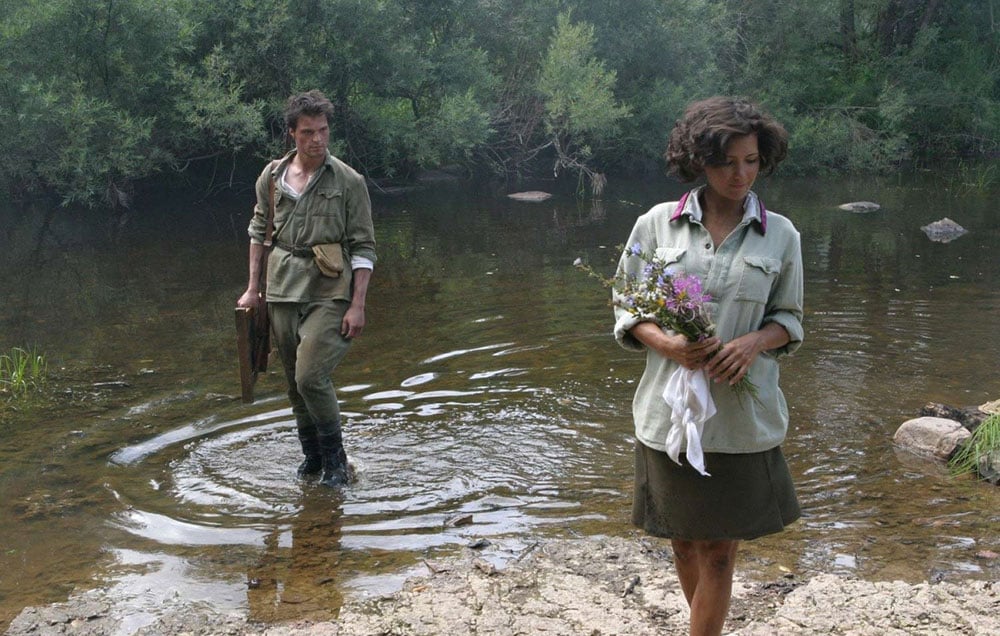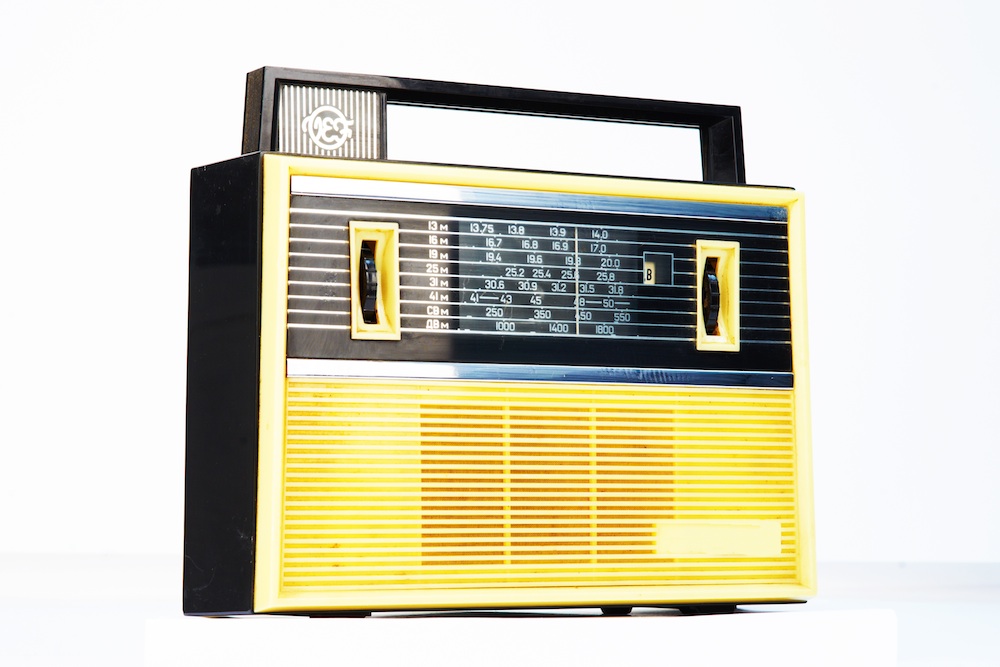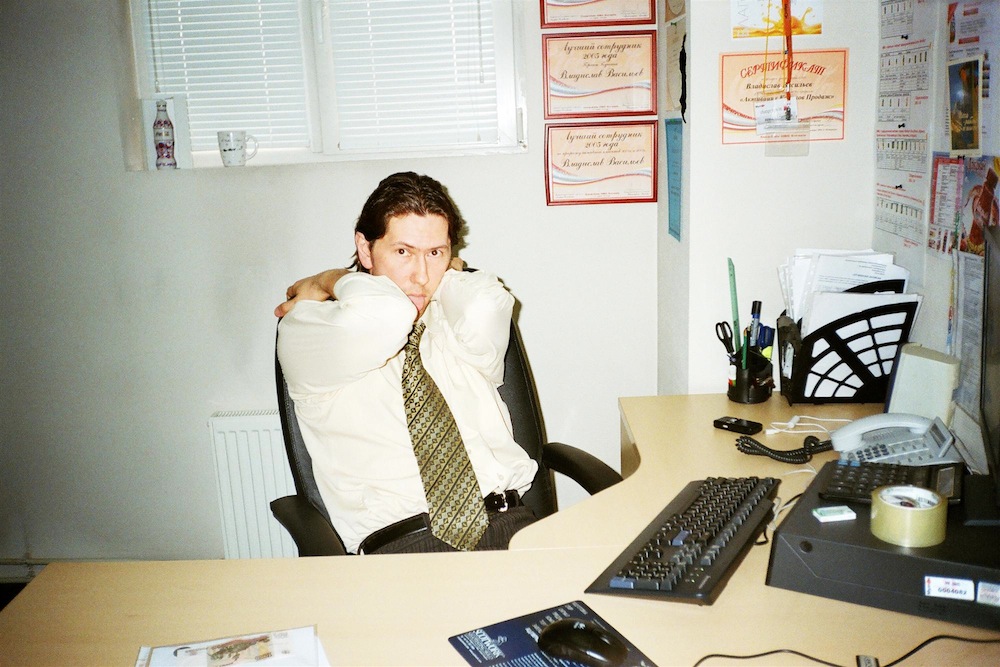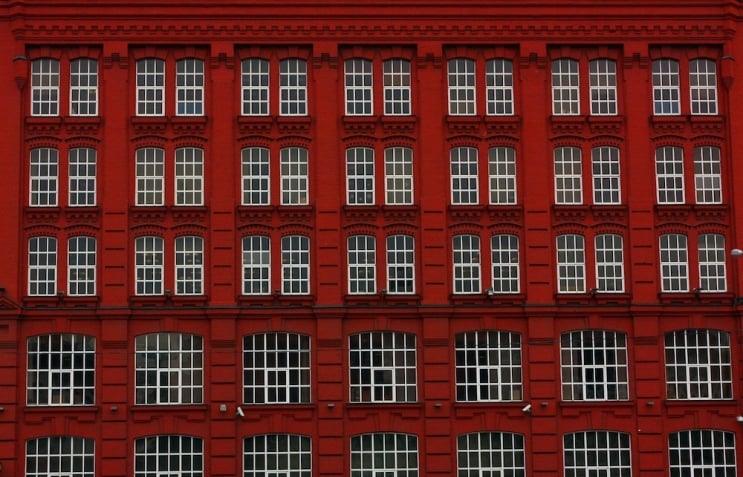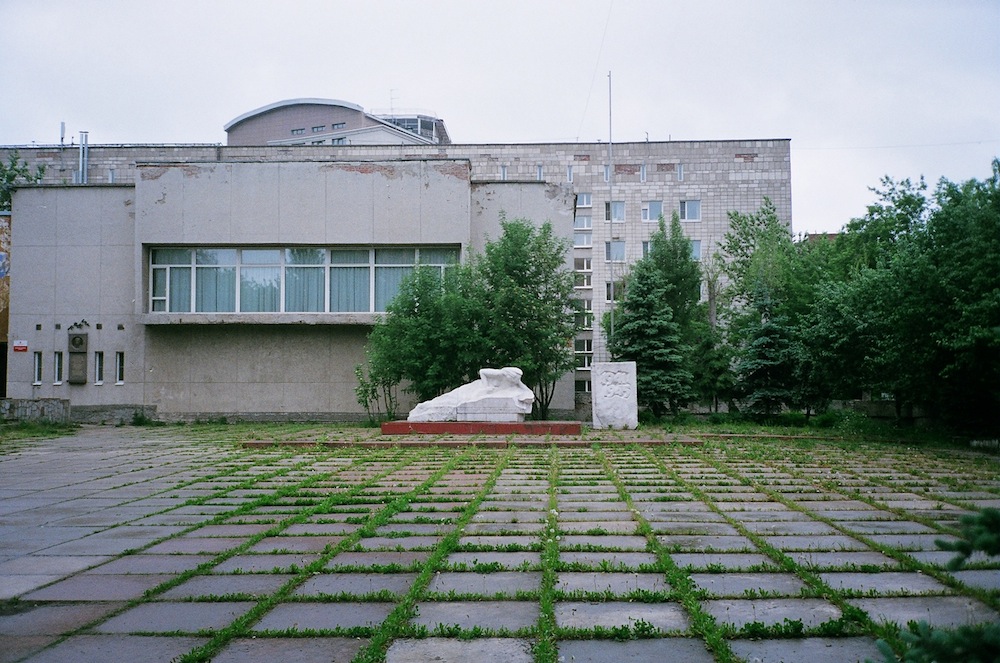The art of work: why the creative industries should embrace, not replace, the legacy of industry
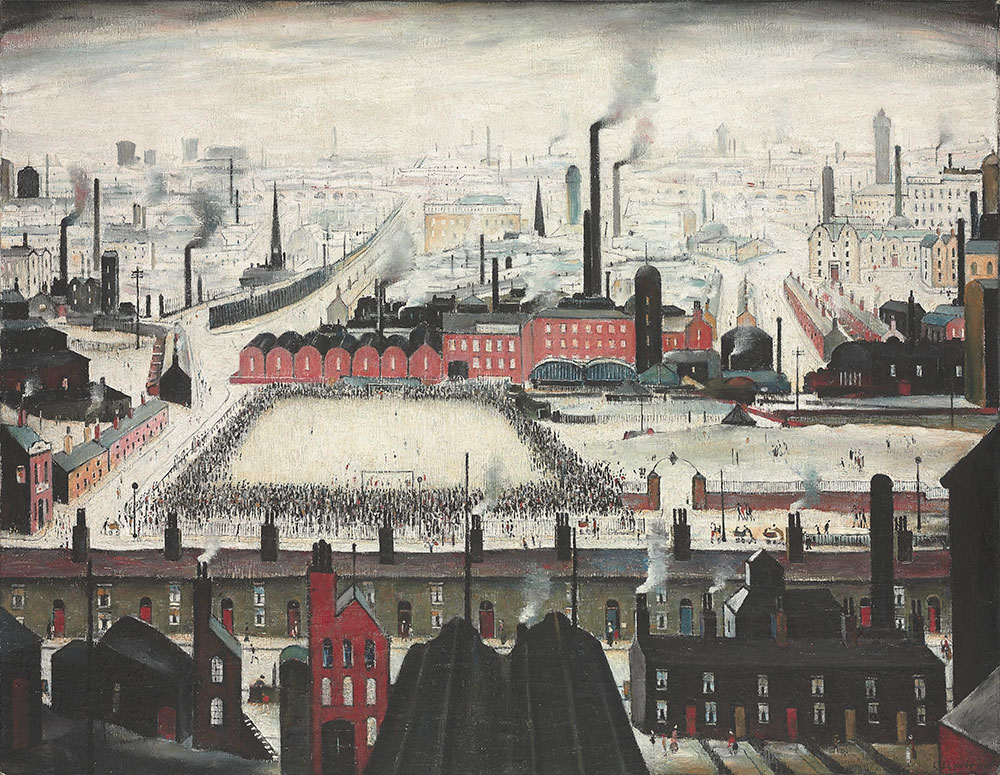
In the second article in a two-part series, Ilya Kalinin suggests a radical vision for the "creative industries". Instead of helping businesses kill off industry, they should harness its potential
The fashionable new cult of the “creative industries” is fast gaining traction in Russia. And while on the surface this might seem all well and good — who doesn’t like a shiny new “creative cluster”? — in reality this new movement has been co-opted by business and government elites to surreptitiously promote a neoliberal agenda that promises to do real harm to the Russian economy.
In this strategy, practical and ideological goals go hand in hand. In practical terms, the trendy label “creative industries” allows big business and its governmental allies to carry out specific projects to their advantage, while simultaneously boosting their reputation for social responsibility. Meanwhile, these same “creative industries” perform an ideological function: they make use of the persuasive rhetoric of self-realisation to conceal all the injustices of contemporary capitalism. They pretend that a lifestyle that is a reality for only a handful of people should be the object desire for everyone and that this lifestyle can provide a fully-fledged alternative to the industrial society it is helping to destroy.
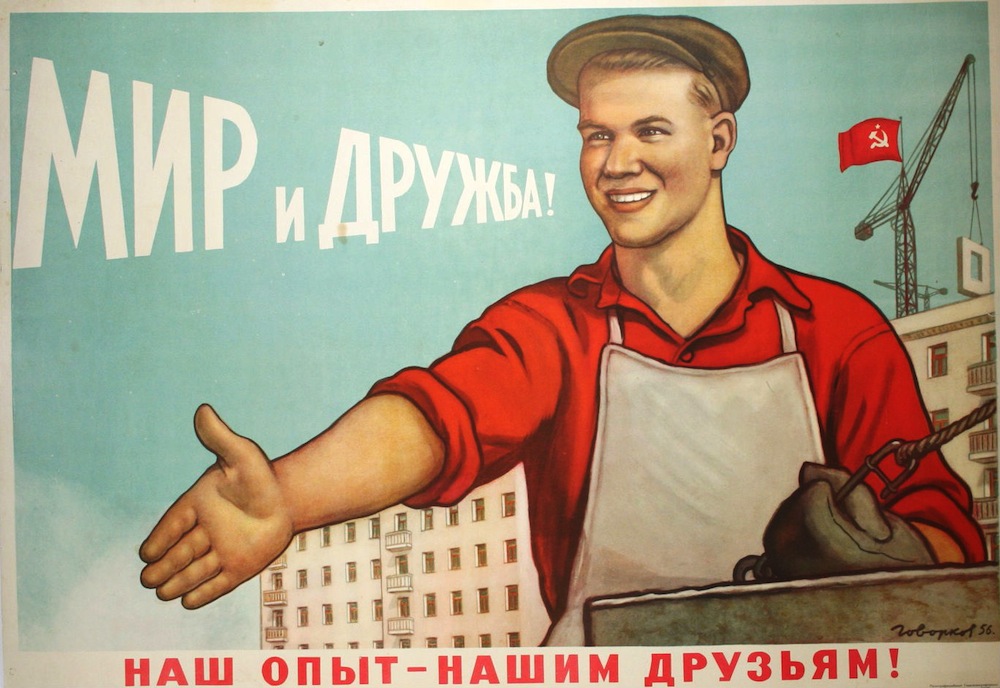
Soviet propaganda poster (1956), by Viktor Govorkov. It reads: “Peace and Friendship. Our experience — for our friends”
In this system the varied masks of capitalism — the stern proletarian, the smug boss, the desperate unemployed — are now subsumed into the all-consuming figure of the creative entrepreneur. The contradictions between labour and capital are erased, exploitation turns into “working with your creative potential”, overtime is celebrated as a fashionable lifestyle choice, and any social tension is exploded by ubiquitous creative jouissance. The creative industries are staging a revolution so that everything can stay the same.
In the post-industrial western world industry is shifted elsewhere, and the ruins that remain in its place are beautified with tasteful design: an aura of curated but crumbling abandonment is fundamental to the new progressive aesthetic. Life is actually getting worse, so it needs to be fun and good-looking instead. The defining credo of the creative economy is fresh, free and fashionable – qualities that are invoked to erase the memory of the difficult industrial past, as well as the physical realities of its disappearance. This past is shunted back into some dark and distant era when these art spaces were still factories, and inhabited by a prehistoric tribe called the Proletarians.
“Could we transform the creative industries into a properly collective project, backed not only by private interests, but communal ones too?”
But in countries like Russia that are still making slow progress down the rutted road to the bright post-industrial future, the creative economy plays another, more sinister role. Its job is not so much to regenerate places that have been lying empty, as to clear out spaces that are still functioning in the old “outdated” industrial format.
“Factories, processing plants and mines aren’t fashionable,” explain the pioneers of post-Soviet creativity when they address city bureaucrats. “They’re not eco-friendly, they’re bad for the city’s image: basically, they’re just so not this season. And the main thing is,” — at this point their voices go half a tone deeper — “the land on which the factory stands is worth more than the factory itself.” The implication being, high-end flats and a shopping centre would bring in a lot more profit and require less capital investment than modernising the factory. In more developed countries, they’re not modernising production, they’re liquidating it. So we should do the same, and become part of the post-industrial creative economy. It’s at this point in the conversation that words like “creative cluster” and “rebranding the city” start popping up: their job is to make sure this “modernisation” is seen as socially responsible as well as progressive.
After all, the people who have been sacked from the factory have to have somewhere to go. It’s not likely that they’ll be moving into those fancy new flats. Or becoming customers at the new shopping centre. And this new infrastructure is only going to provide jobs for a handful of the newly redundant workers (mostly the women). So what are you left with? A creative cluster. And all its cordially ever-open doors offer these former workers is a chance to become fresh, free and fashionable.
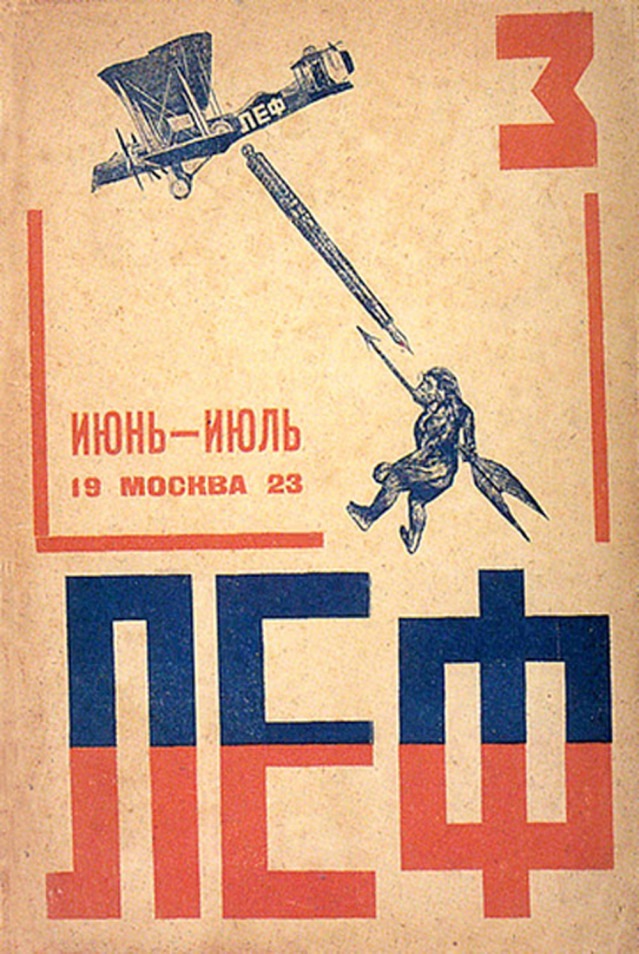
LEF, No. 3, June-July 1923. LEF campaigned for recognition of the creative character of the building of socialism
In this way, something that happened in Europe, the USA and Australia out of necessity, has in Russia been adopted by big business, in tandem with the bureaucratic elite, as part of an aggressive strategy to legitimise their actions. And that’s not to mention the fact that it’s easier to account for funds spent on developing the “creative economy” than on, say, road building because it’s never quite clear how much money has been put in them.
But still. Can we not perhaps imagine another future for the creative industries? A future which wouldn’t try to make it seem like there was no industrial past, or relegate it so far back in history that it’s almost mythical. A future which wouldn’t rely on something else being destroyed, something that actually is a reality for the majority, people who consume mass-produced goods, who work physically making something or doing something, people who aren’t that fresh, free or fashionable. Could we transform the creative industries into a properly collective project, backed not only by private interests, but communal ones too — a utopia that could inject creativity into not only the intangible, post-industrial labour of “free creative individuals” but also into the mass labour going on in factories? Could we forge a union between contemporary art and assembly-line production?
“The creative industries could stage an art project as part of the running of an ordinary industrial facility”
This was once the dream of the Russian avant-garde. In the early 1920s critic and author Viktor Shklovsky saw art as a way of transforming all mankind, releasing the creative potential in everyday life. Sergei Eisenstein, before he turned to film, staged his first theatre productions in working factories, provoking the workers into getting involved with their own spontaneous artistic gestures. The doctrine of “literature of fact”, formulated by the Left Front of the Arts (LEF), a polemical 1920s literary grouping co-founded by poet Vladimir Mayakovsky, confirmed the creative character of the building of socialism in itself. These were the creative industries of the 1910s and 1920s — creative industries with a truly popular character.
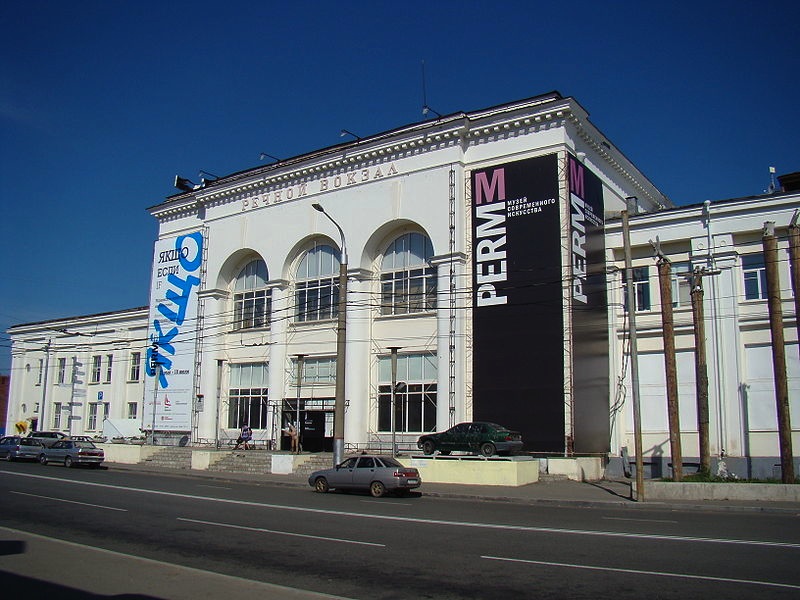
PERMM, the Perm Museum of Contemporary Art, which is housed in a former ferry terminal
That seems all but impossible now. But maybe we can do the reverse. The Russian avant-garde strove to present industrial labour as an artistic project. The new creative industries could do the opposite, and stage an art project as part of the running of an ordinary industrial facility. Or they could transform a contemporary art museum into a factory — a real factory with workers, production lines, products. Or you wouldn’t even have to be so radical. Those contemporary art museums that have occupied empty factory buildings can stay where they are. But any new projects to create new creative spaces or museums shouldn’t close down working factories, but reorganise them. Let’s still call it “contemporary art” if that’s what catches the imagination of the oligarchs’ wives, or a “creative cluster” to please the journos, designers and middle-aged bureaucrats.
Yes, an industrial project like this would cost more than deindustrialisation. Turning, for instance, PERMM, the Perm Museum of Contemporary Art, which is housed in a former ferry terminal, into a working port would be hard and expensive. But what a museum it would be! A museum of the industrial past and the welfare state. With hydrofoils. And affordable ticket prices. And daily departures to towns and villages along the river Kama — areas currently only reachable by circuitous local bus routes or in your own car. Think how many visitors such a museum would have! And not just po-faced young hipsters, but people of all ages and backgrounds.
Everybody wins: production survives the neo-liberal onslaught and the new creative economy get their only chance to take on real industrial scale and reach a mass audience. Let’s give it a go.

